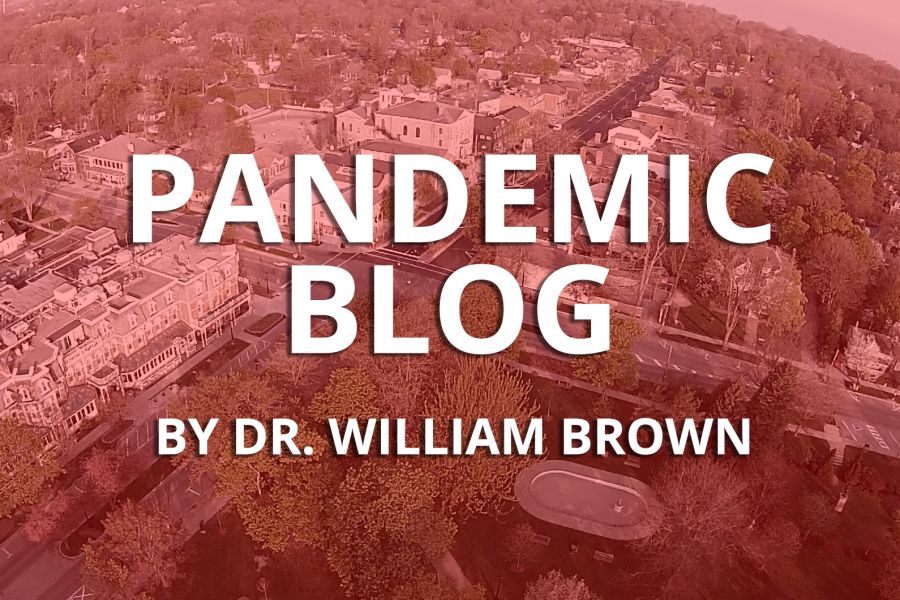Dr. William Brown
Special to The Lake Report
Established programs at the Niagara-on-the-Lake library, such as Infohealth and the Nobel series, won’t be the same this fall because of the need for social distancing.
That means no face-to-face meetings in the library or community centre until we have an effective, widely available vaccine to stop COVID-19 in its tracks.
However, in the face of this pandemic, it was amazing how quickly businesses, families and teachers from primary schools to universities quickly pivoted to the internet to fill in the gaps.
Enter Zoom – the latest user-friendly program for bringing people together electronically. In this pandemic, Zoom soon transformed how we meet with colleagues, friends and families and in the process, many became familiar with how Zoom works.
That makes Zoom an attractive tool for continuing our signature programs in a virtual room rather than at the library. And if you’re not yet familiar with Zoom, the library stands ready to help you get started.
Two programs are planned for the fall. The first is a six-week program focusing on the period in physics between 1900 and 1930 – the Camelot era in physics.
In no other time in human history have we learned so much about the universe writ large and the universe of the tiny – the nucleus, subatomic particles and forces. Before 1900, some senior scientists continued to question whether atoms actually existed. The electron had been discovered but that was it.
However, over the next three decades the structure of the atom was worked out – the nucleus largely by Ernest Rutherford, a New Zealander working at McGill, Manchester and Cambridge universities, and James Chadwick, his Cambridge colleague.
And the riddle of the arrangement of the orbiting electrons was sorted out by Niels Bohr before and during his time with Rutherford, who befriended and encouraged him, after which time Bohr returned to Denmark to establish his justly famous Copenhagen Institute for Theoretical Physics.
To this new quantum world, Albert Einstein, working as a patent clerk in Switzerland, made two signature contributions in 1905, one to do with the photoelectric effect (which incidentally won him a Nobel prize) and the other on the quantal nature of light.
But it was his work on the relativistic nature of time in 1905 (special relativity) to which he added gravity in 1915 (general relativity), which upended Isaac Newton’s view of the universe and gravity that made Einstein the most celebrated scientist of his day and ours.
Evidence based on his equations for general relativity and later observations by the Hubble space telescope revealed that the universe was expanding and therefore must have started with something incredibly small and dense – evidence for which led to the Big Bang hypothesis.
Black holes produced by the collapse of stars and gravitational waves created in space-time by the collision of massive objects such as two black holes or a pair of neutron stars were also products of Einstein’s work on relativity.
In those heady days, with a few exceptions, physics was a largely European affair – a close-knit group who knew one another well and as much as they argued and debated matters related to physics, especially the new field of quantum physics, they respected each other and often became very close friends.
That was especially true of Bohr and Einstein, whose disparate views on the quantum world were never reconciled in their lifetimes. Through the lives of these men and women we learned that differing world views, even strongly held, are not reasons for enmity but respect and that’s a theme worth remembering in these fact-free, spun days.
The second six-week program highlights the 2020 Nobel prizes, beginning with physics, then chemistry, medicine (physiology), economics, the peace prize and finally the literature award.
This program has been a winner with the public in NOTL in the last two years and is an opportunity to learn about some of the best in science and the arts. This year we welcome back David Elkins to cover the economics and peace prizes, and Valmai Elkins for once more taking on the challenge of the literature prize.
Contact the library for times and help with Zoom.
* I don’t usually include references but here are a few gems, especially Rovelli's and Lightman’s short books, written by excellent writers and physicists: Carlo Rovelli (2014), “Seven Brief Lessons on Physics,” Penguin Random House; Carlo Rovelli (2018), “The Order of Time,” Riverhead Books; Allan Lightman (2018), “Searching for Stars on an Island in Maine,” Pantheon Books; Allan Lightman (2012), “The Accidental Universe,” Vintage Books; Manjit Kumar (2008), “Quantum: Einstein, Bohr and the Great Debate About the Nature of Reality,” W. W. Norton & Company; C.P. Snow (1981), “The Physicists: A Generation that Changed the World,” Little, Brown and Company; Brian Greene (2020), “Until the End of Time,” Alfred A. Knopf.
Dr. William Brown is a professor of neurology at McMaster University and co-founder of the Infohealth series at the Niagara-on-the-Lake Public Library.










